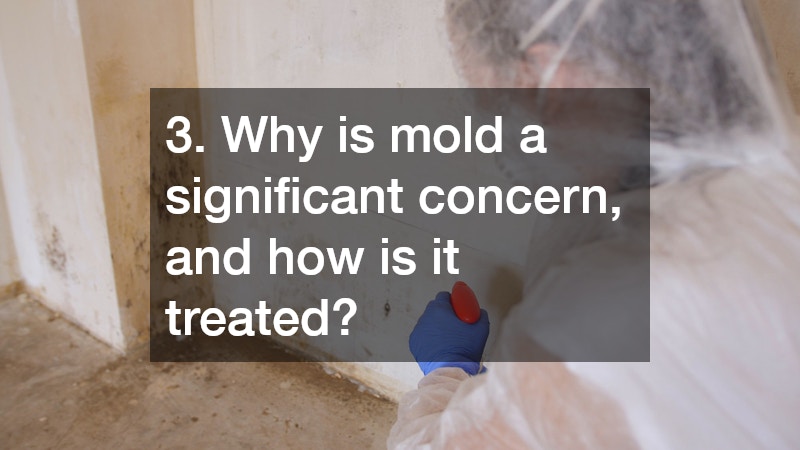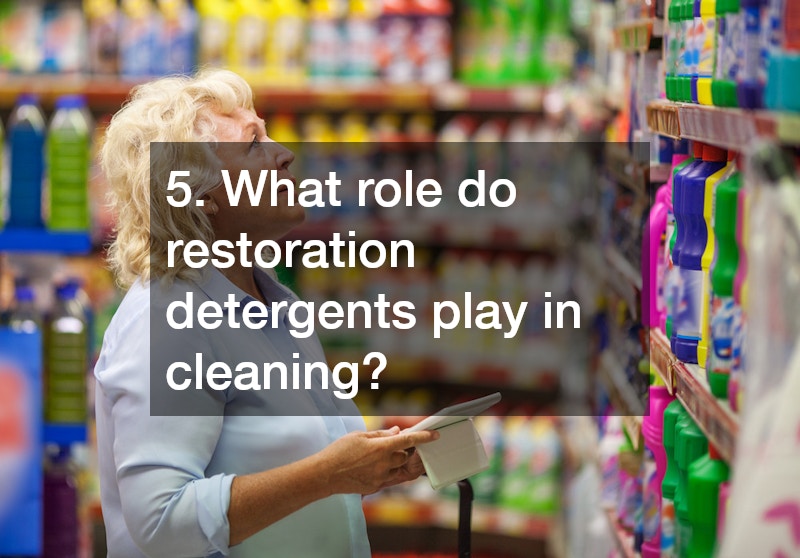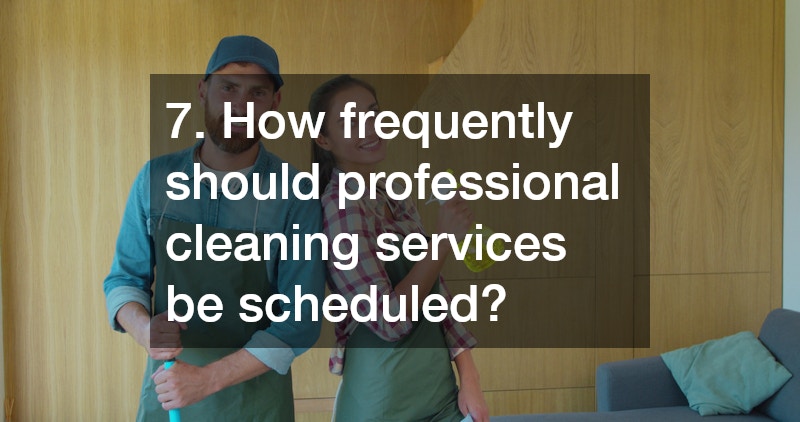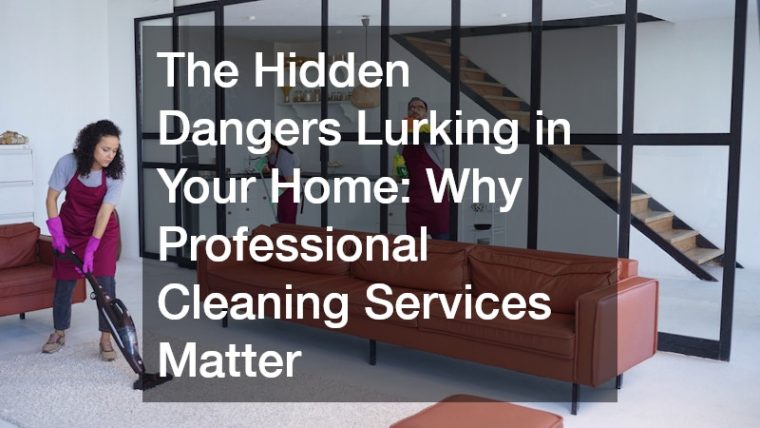
In this comprehensive exploration, we delve into the unseen perils within your living space and the critical role professional cleaning services play in mitigating these hazards. From hidden toxins to persistent allergens, your home may harbor risks that require expert intervention. Professional cleaning services utilize specialized techniques and tools, including restoration detergent, to ensure your home is a safe and healthy environment.
Home environments, despite appearing clean on the surface, often conceal numerous health hazards that can impact family wellbeing. These dangers range from microscopic allergens to toxic substances embedded in building materials. The average homeowner may lack the specialized equipment, knowledge, and products necessary to address these issues effectively. This is where professional cleaning services become invaluable, offering expertise and solutions that go beyond routine housekeeping to tackle deeper sanitation concerns.
1. What are the most common hidden dangers in homes?
Unseen threats in our homes can range from chemical pollutants to structural hazards like asbestos. Asbestos, once a common building material, poses serious health risks, and professional asbestos clean up is necessary to safely remove it. Experts use advanced methodologies and restoration detergents to eliminate these invisible dangers from your home.
Asbestos was widely used in construction before its health risks became known, and it remains present in many older homes built before the 1980s. When disturbed, asbestos fibers can become airborne and, when inhaled, lead to serious respiratory conditions including mesothelioma and lung cancer. Professional asbestos removal specialists are trained to identify potential asbestos-containing materials and employ containment measures to prevent fiber dispersal during cleanup operations.
Restoration detergent plays a crucial role in the sanitation process, effectively breaking down hazardous particles. Cleaning professionals utilize these specialized detergents during asbestos clean up to ensure complete removal and disposal. Such measures not only mitigate immediate health risks but also prevent exposure to carcinogens.
The process of professional asbestos cleanup involves careful assessment, containment of the affected area, specialized removal techniques, and proper disposal according to environmental regulations. During cleanup, professionals wear protective equipment including respirators, gloves, and disposable clothing to prevent personal exposure and cross-contamination of other areas in the home.
2. How can professional cleaning services address hidden allergens?
Hidden allergens can significantly impact indoor air quality and exacerbate health problems such as asthma and allergies. Dust mites, pollen, and mold spores often accumulate in air ducts, necessitating professional air duct cleaning. Experts employ restoration detergent to sanitize these systems thoroughly, ensuring a healthier living environment.
Indoor air quality concerns have grown in recent years as homes have become more energy-efficient and airtight, potentially trapping allergens inside. Studies show that indoor air can be two to five times more polluted than outdoor air, making professional cleaning interventions crucial for maintaining respiratory health. Air duct systems act as collection points for various contaminants that circulate throughout the home each time the heating or cooling system activates.
Regular air duct cleaning can drastically reduce the concentration of airborne allergens in a home. By incorporating restoration detergent, professionals can effectively dislodge and neutralize contaminants. This approach not only improves air quality but also contributes to energy efficiency, as clean ducts enable HVAC systems to work more effectively.
Professional air duct cleaning typically involves inspection using specialized cameras, powerful vacuum equipment to create negative pressure, agitation tools to dislodge debris, and the application of antimicrobial treatments when necessary. This comprehensive process addresses not just visible dust but also microscopic allergens that can trigger respiratory issues.
The use of restoration detergent is especially beneficial in eliminating microbial growth. When left untreated, mold and bacteria can proliferate in air duct systems, affecting respiratory health. Professional cleaning services address these invisible threats with comprehensive solutions, ensuring your home remains a safe space free of hidden allergens.
3. Why is mold a significant concern, and how is it treated?

Mold is a persistent and potentially harmful problem that affects many homes, particularly in damp environments. Engaging a mold remediation company is essential to tackle mold infestations, using advanced techniques and restoration detergent to eradicate growth from surfaces. The treatment process involves identifying mold sources and preventing recurrence with effective solutions.
Mold exposure has been linked to numerous health issues including respiratory problems, allergic reactions, and in some cases, more serious conditions. The CDC and EPA recognize mold as a significant indoor air quality concern, particularly for vulnerable populations such as the elderly, young children, and those with compromised immune systems. Beyond health concerns, unchecked mold growth can cause structural damage to buildings, affecting drywall, wood framing, and other building materials.
Professional mold remediation services employ specialized tools and restoration detergent to penetrate and clean mold-infested areas. This method ensures comprehensive removal, mitigating health risks associated with mold exposure such as respiratory issues and immune system complications. Technicians follow stringent protocols to secure a mold-free environment.
The mold remediation process typically begins with a thorough assessment to identify the extent of the infestation and the underlying moisture source. Professional remediation companies use moisture meters, thermal imaging cameras, and air sampling devices to detect hidden mold colonies that may not be visible to the naked eye. This diagnostic approach ensures that treatment addresses the full scope of the problem rather than just surface symptoms.
4. Are there environmental benefits of using professional cleaning services?
Professional cleaning services contribute positively to the environment by using eco-friendly cleaning solutions and practices. These services often select biodegradable restoration detergents that minimize ecological impact while maximizing cleaning efficacy. Using such products ensures effective sanitation without introducing harmful chemicals into the environment.
The evolution of professional cleaning has increasingly emphasized sustainability, with many companies now prioritizing green certification and environmentally responsible practices. This shift reflects growing consumer awareness about the impact of harsh chemicals on both indoor and outdoor ecosystems. Professional services often have access to commercial-grade green cleaning products that offer powerful cleaning action without the environmental drawbacks of traditional chemical cleaners.
The reduction of water and energy consumption is another environmental benefit of professional cleaning services. By using high-efficiency equipment and concentrated cleaning solutions, these services optimize resources, reducing waste and preserving energy. Restoration detergent plays a critical role in enhancing the effectiveness of these eco-friendly cleaning practices.
Modern professional cleaning equipment, such as high-efficiency vacuum systems with HEPA filtration and steam cleaners that use minimal water, exemplify how professional services can achieve superior results with reduced environmental impact. These technologies can remove contaminants more effectively than conventional methods while using significantly less water and energy.
5. What role do restoration detergents play in cleaning?

Restoration detergents are engineered to tackle challenging cleaning tasks effectively, especially in the wake of water damage. These detergents double as water damage cleaners, breaking down stubborn residues and restoring affected areas to their original condition. Their role is pivotal in returning a home to a livable state post-disaster.
Advanced restoration detergents contain specialized formulations designed to address specific types of contamination and damage. These may include surfactants that break surface tension to penetrate materials more deeply, enzymes that break down organic matter, chelating agents that bind with minerals in hard water, and antimicrobial components that inhibit biological growth. This chemical sophistication allows for more targeted and effective cleaning than conventional household products can provide.
Professional cleaning services use restoration detergents to dislodge and remove mold, mildew, and other contaminants that often accompany water damage. These specialized detergents not only cleanse surfaces but also prevent the growth of harmful microbes. The result is a cleaner, safer environment free from the lingering effects of water damage.
Water damage restoration involves several critical stages where specialized detergents play different roles. Initially, extracting standing water requires detergents that help break down contaminants in the water. The cleaning phase uses detergents to remove residues and sanitize surfaces. Finally, preventative treatments may include detergents with properties that discourage future microbial growth or that neutralize odors at the molecular level rather than simply masking them.
6. How can professional cleaning services improve home safety?
Home safety is significantly enhanced by employing professional cleaning services that address hidden dangers such as mold and toxins. Mold mitigations are essential, as mold exposure is a considerable health risk. By using restoration detergent, experts ensure thorough mold removal, preventing re-emergence and safeguarding the home environment.
Professional mold mitigation goes beyond surface cleaning to address the root causes of mold growth and implement preventive measures. Technicians assess humidity levels, identify water intrusion points, and recommend structural or mechanical improvements such as improved ventilation, dehumidification systems, or repairs to building envelope components that may be allowing moisture entry.
In addition to mold, toxic residues and allergens are efficiently handled by professional services. Equipped with restoration detergents and advanced cleaning techniques, these services can eliminate hazardous substances that compromise safety. Regular sanitation also prevents accidents related to slippery surfaces and reduced visibility due to dust and debris.
Safety improvements from professional cleaning extend to fire prevention through services like dryer vent cleaning, which removes highly flammable lint accumulation that causes thousands of house fires annually. Similarly, chimney cleaning services prevent dangerous creosote buildup that can lead to chimney fires, while proper cleaning of kitchen exhaust systems reduces grease accumulation that poses a fire hazard.
7. How frequently should professional cleaning services be scheduled?

The frequency of professional cleaning services depends on factors such as home size, lifestyle, and environmental conditions. Regular carpet cleaning, at least once annually, is advisable to maintain cleanliness and prevent allergen buildup. Incorporating restoration detergent in these cleanings enhances the removal of deep-seated dirt and prolongs carpet life.
High-traffic areas in carpeting may require more frequent professional cleaning, potentially every 6-8 months, while less-used spaces can adhere to the annual recommendation. Homes with pets, children, allergy sufferers, or smokers often benefit from scheduling carpet cleaning services more frequently, as these factors accelerate soil accumulation and potential allergen concerns in carpet fibers.
For comprehensive sanitation, scheduling air duct cleaning every two to three years ensures indoor air remains clean and free of irritants. Mold-prone areas may require more frequent interventions, necessitating regular mold mitigations to prevent growth. Expert guidance from cleaning professionals can help establish an optimal cleaning schedule tailored to your needs.
Seasonal considerations also influence professional cleaning schedules. Spring cleaning often includes services that address winter accumulation of indoor pollutants from sealed environments and heating system usage. Fall cleaning frequently focuses on preparing HVAC systems for winter operation through air duct cleaning and furnace maintenance to prevent circulation of dust and allergens during months when windows remain closed.
Regular professional cleanings, using high-quality restoration detergents, contribute to a healthier indoor environment and reduce maintenance costs over time. By keeping surfaces and systems clean, these services prevent deterioration and costly repairs, ensuring your home retains its value and comfort.
8. Are professional cleaning services cost-effective in the long run?
Investing in professional cleaning services can be cost-effective over time, as they prevent damage that leads to expensive repairs. For instance, regular septic pumping service prevents system malfunctions, avoiding costly overhauls. Using restoration detergent and specialized cleaning techniques preserves infrastructure and extends the lifespan of home systems.
The cost of septic system replacement can range from $5,000 to $25,000 or more, making the relatively modest expense of regular pumping services (typically $300-$600 every 3-5 years) a wise financial decision. Similar cost-benefit analyses apply to other professional cleaning services that prevent deterioration of home components and systems through regular maintenance.
Carpet cleaning is another service that, when regularly scheduled, prevents premature wear and replacement. By maintaining carpets in good condition with restoration detergent, homeowners can prolong their lifespan and reduce expenses. Similarly, routine maintenance of air ducts with expert cleaning prevents costly HVAC repairs and replacements.
Air duct cleaning can improve HVAC system efficiency by up to 40%, according to some industry studies, resulting in reduced energy bills that offset the service cost over time. Clean air handling systems also experience less mechanical wear, extending the operational life of expensive components and delaying replacement costs.
9. What certifications and standards should professional cleaning services meet?

Professional cleaning services should adhere to industry certifications and standards to ensure quality and reliability. Reputable services often hold certifications from organizations that set guidelines for cleaning practices and safety. Using restoration detergent that meets or exceeds these standards ensures effective cleaning and safety for your home.
Organizations such as the Institute of Inspection, Cleaning and Restoration Certification (IICRC) establish industry standards for various cleaning specialties. The IICRC S500 Standard for Professional Water Damage Restoration and S520 Standard for Professional Mold Remediation are examples of comprehensive guidelines that certified professionals follow to ensure thorough and safe cleaning practices.
For specialized tasks like sewer cleaning, engaging services with certified sewer cleaners is crucial for maintaining sanitation. These professionals follow stringent protocols to manage sewage and wastewater systems, using approved restoration detergents to neutralize contaminants. Certification ensures the job is completed to industry standards, preserving home hygiene and safety.
Certified sewer cleaning technicians understand the complex dynamics of residential and municipal waste systems, including proper handling of potentially hazardous materials and appropriate disposal methods. Their training includes recognition of early warning signs of system failures that could lead to costly backups or environmental contamination if left unaddressed.
10. How do professional cleaning services contribute to overall well-being?
Professional cleaning services enhance overall well-being by ensuring living spaces are clean, safe, and free from health hazards. Efficient attic insulation, combined with thorough cleaning, prevents energy loss and improves home comfort. Restoration detergent is instrumental in preserving these areas, contributing significantly to indoor air quality and thermal efficiency.
Attic spaces often contain significant dust accumulation and may harbor pests that affect indoor air quality throughout the home. Professional cleaning of these areas, combined with proper insulation maintenance, creates a barrier against both energy loss and contaminant migration from unconditioned spaces into living areas, promoting better respiratory health and consistent indoor temperatures.
Cleaning services that use restoration detergents also tackle allergens and bacteria, which are key contributors to poor health. By addressing these threats, professional cleaning helps prevent illnesses and boosts general health. A clean home also reduces stress and enhances mental well-being, providing a serene and healthy environment.
The psychological benefits of a professionally cleaned home should not be underestimated. Research suggests that clutter and uncleanliness can contribute to increased stress levels and decreased productivity. Professional cleaning services provide thorough results that create a sense of order and cleanliness that can be difficult to achieve and maintain through routine housekeeping alone.
As we unveil the often-overlooked threats in our homes, it’s clear that professional cleaning services are integral not just for maintaining aesthetics but also for ensuring safety, health, and environmental sustainability. Leveraging expert techniques and advanced detergents, including the pivotal restoration detergent, these services offer a critical line of defense against the unseen dangers within our living spaces. From routine maintenance to specialized interventions, the role of professional cleaning in preserving home well-being and value cannot be understated.
